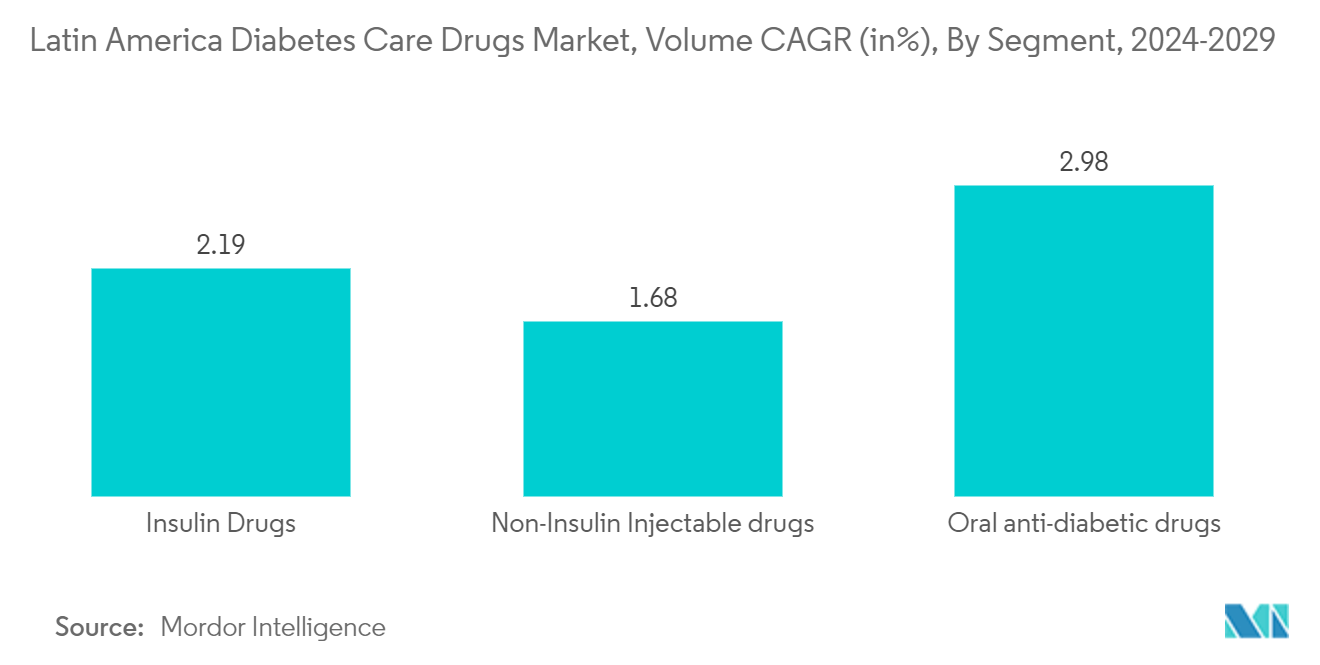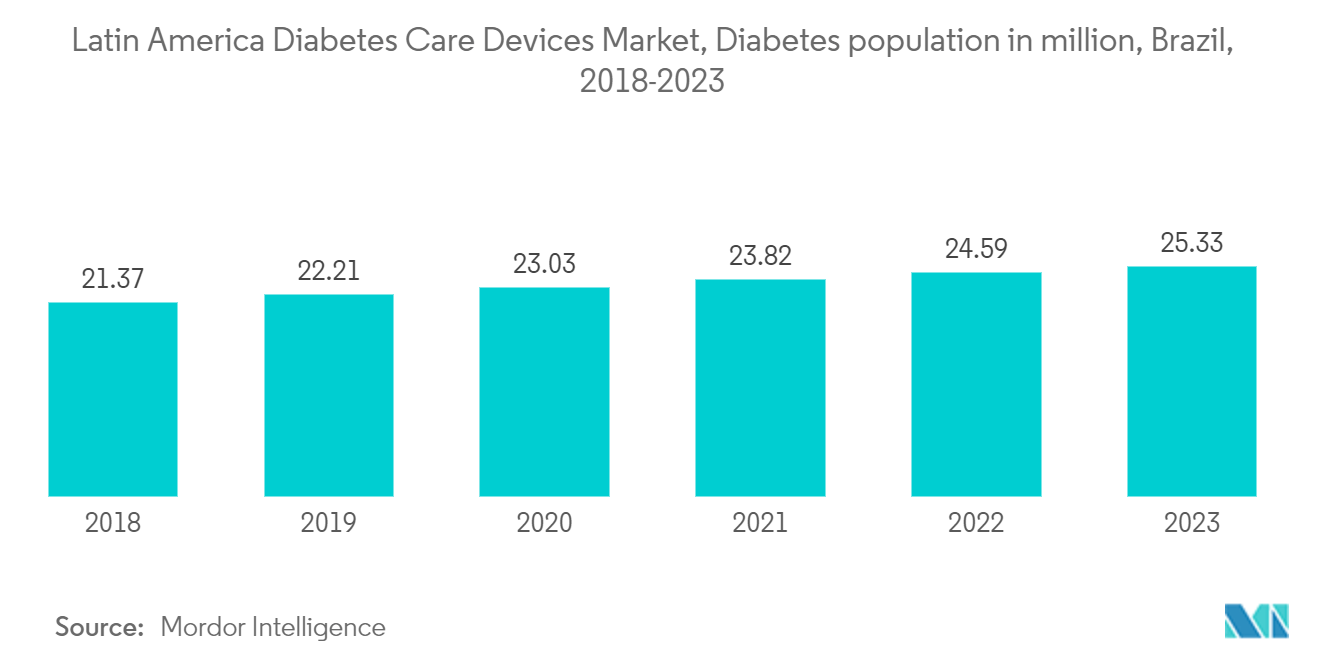Market Trends of Latin America Diabetes Care Drugs Industry
Oral Anti-Diabetic Drugs have the Highest Market Share in Current Year
The Oral Anti-Diabetes Drugs segment is expected to increase with a CAGR of over 3% during the forecast period, mainly due to the demand from the Type-2 diabetes population.
In Latin America, families pay about 40%-60% of diabetes costs out-of-pocket. Most private health insurance plans cover medical assistance, procedures, and hospitalization, not medication. Latin America is undergoing a remarkable epidemiological transformation. Diabetes and other chronic, nontransmissible diseases are now the leading health problems. Despite the large and growing number of diabetes cases, this geographic area invests limited financial resources in diabetes care. Metformin is the most commonly used oral diabetes medication. It's been around for a long time and has been extensively researched.
As a result, doctors frequently advise patients to start with metformin. If medication is required for gestational diabetes, metformin is the first choice of providers. According to the International Diabetes Federation, diabetes patients spent USD 966 billion in 2021, of which Type-1 diabetes patients spent a major chunk on insulin drugs. Few type-2 diabetes patients also depend on insulin. Although only 10% of the diabetes population is Type-1, their insulin intake is higher. Demand for oral drugs is driven by increased awareness about the benefits of diabetes cures for patients, especially in emerging economies. Primary care providers, nurse practitioners or PAs, endocrinologists, and internists frequently prescribe oral hypoglycemic agents.
However, educating the patient on lifestyle changes such as dietary changes and exercise therapy is critical. A dietary consultation is frequently required to educate the patient on a healthy diet. The patient should be encouraged to start an exercise program, quit smoking, and lose weight. Whatever oral hypoglycemic agent the clinician prescribes, interprofessional team members must be aware of the potential side effects and interactions with other medications, provide dietary and exercise advice, and collaborate to optimize therapeutic results.
Other factors, such as innovative drug development by major companies and the rise in the geriatric and obese population, may fuel the growth of the oral diabetes drugs market.

Brazil Diabetes Drugs Market is having Highest CAGR during the forecast period
In Brazil, the Brazilian health system is managed by each state and local health secretariat and is governed by the MOH. Furthermore, in many towns where the public sector cannot meet people's requirements, partnerships with private organizations have been put in place to increase access to PHC. The Brazilian health system provides coverage for medicines through programs that include 20% expanded access to essential medicines. Brazil offers an extensive free immunization program. Brazil faced numerous lawsuits over the last 20 years, demanding the coverage of high-cost drugs to treat diabetes and certain rare or low-prevalence diseases.
According to Universal Health Coverage 2022, the four nations, including Argentina, Brazil, Colombia, and Mexico, achieved an overall index of essential coverage of 76-77 percent, with households spending less than 25 percent of their income on health care and expanding access to primary healthcare systems and coverage for noncommunicable illnesses enhanced service coverage, while a rise in the number of qualified healthcare personnel enabled community outreach. Brazil's government is encouraging diabetes patients to use the medication to reduce the death rate in Brazil.
The programs like "Health Has No Price (SNTP)" conducted by the Brazilian Ministry of Health associated with private pharmacies in Brazil to provide diabetes patients with two types of insulin (regular human insulin and isophane insulin or NPH) and three oral antidiabetic medications (5 mg glibenclamide and 500 and 850 mg metformin) free of charge.
As a result, the diabetes care market in Brazil is predicted to expand gradually in the coming years.


